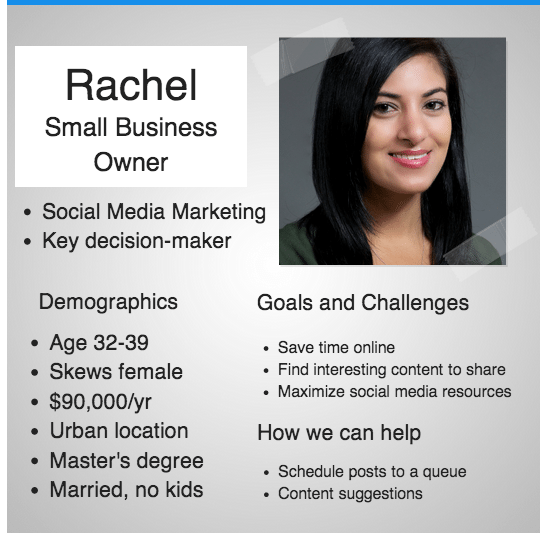Understanding the “WHO” in Marketing Personas
“Who are you? Who, who, who, who?” The Who is not the only group asking this question. In order for marketers to create marketing campaigns, cater specific content, or increase their reach, they need to understand who they are targeting.
The “who” is much more than a name, particular gender, or age. “Who” includes the nitty gritty details - or the persona - that define and narrow down the audience.
What is a Persona?
A persona is a fictitious character who represents an archetype of the target audience. Inspired by qualitative and quantitative data (such as demographic, psychographic, ethnographic, transactional, and behavioral research), they are created to help the marketer understand how to interact with the market. Personas identify similar patterns in motivations, preferences, needs, technical skills, goals, and behaviors to give an overall identity to the audience.
Instead of assuming the wants and needs of the audience, personas put a face and story behind the “faceless consumer.” This empathetic element helps the marketer put the customer at the center of the marketing initiative. Jeff Bezos keeps his staff aware and cognizant of the consumer by placing an empty chair in Amazon meetings to represent the customer’s presence.
Why are personas beneficial to marketers?
They pave the way to more customer-centered communications.
With a proper understanding of how the audience thinks and feels, marketers can create relevant content marketing in the right tone and style.
When creating content and the personas, notice the clear distinction between an audience and a buyer persona. Audience personas seek information and buyers seek purchases. Adjust content accordingly.
Site navigation is more focused since the marketer is targeting a certain group instead of casting a wide net.
Research is thorough. Audiences and approaches are chosen objectively.
Resources are used efficiently to benefit all parties.
Certain consumers may be at different stages of their lives, but want the same product. Instead of attempting to hit multiple targets with a broad campaign, use time, energy, and money to reach the people who will care. Run separate campaigns for the same target but target defined groups.
They can help convert users.
The consumer is more likely to share relatable content on their social platforms. Cross-channel personas will also increase multichannel journeys and followers.
How are personas created?
Include a picture and a brief summary.
Define the basic, demographic details.
Name, age, and gender
Education, job, salary, and role - Would they make a purchasing decision?
Family members - kids?
Location
Launch into specificities like goals and challenges.
Primary and secondary goals
Values
Fears
Primary and secondary challenges
Dig deeper to know the psychographic details or what they do in their spare time.
Hobbies
Skills
Preferences
Media outlets
Blogs or books they read
Teams or organizations they care about
How will you reach this person? List their preferred content medium.
Use analytical data and customer interviews/surveys to figure out which platform this type of person prefers
Bring them to life by listing quotes that inspire them.
Messaging
What speaks/incentivises them to act?
Here are examples of persona templates:
The Beginner’s Guide to Defining Buyer Personas
Constantly Adjust the Personas!
Personas are dynamic. Consumer behavior is always changing depending on the environment, the economy, or personal factors. Consistently measure and adjust personas. Then once they are set in place, be sure to target personas at different times in the sales funnel.
Create your Own!
There are numerous resources like HubSpot where you can download and make your own templates.



